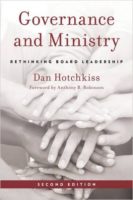
If your congregation has more than one person in it, sooner or later it will find itself divided. When that happens, leaders face a dilemma: they can advocate for the point of view they think is right, or they can work to hold the community together. Most of the time community is more important—but not always.
Some fences are just too hard to straddle. It’s fine to say, “We’re one big family. We agree to disagree.” But when the disagreement is about a matter of fundamental principle, such as who can be recognized as a full member of the family, it’s not so simple.
Conflicts over sexuality
Today a number of denominations—including the United Methodist Church—are struggling over how and whether to ordain gay and lesbian people. The easiest difference for outsiders to see is simply between “progressives” who want to recognize a wider range of people and “conservatives” who hold to older standards of acceptable behavior.
But another difference is more visible to the participants themselves—between those whose first priority is to achieve what they think is the right outcome and those who want to hold the community together.
I first encountered this dilemma when I was in college, writing for the student paper. The local Episcopal church was divided over women’s ordination. Almost all the members of that congregation agreed that the church should ordain women—but some wanted it to happen through an orderly decision process while others insisted it should happen right away.
This situation was hard to explain to my student editors, who kept trying to simplify the story into a battle between “liberals” and “conservatives.” It was hard for them to understand how anyone was willing to live with the suppression of women’s gifts and calling—even temporarily—if that’s what it took to bring everyone along.
Church or sect?
Some faith traditions specialize in righteous action to right wrongs, while others favor unity, even at the cost of ambiguity about important points. Each denomination transmits family traditions about how to handle this dilemma, often by telling stories about faith heroes.
If we talk about prophetic souls who clung to the right even unto martyrdom, we frame ourselves as a “sect”—an outpost of purity against prevailing views. But if we speak with pride of famous presidents and business leaders who once belonged to our faith group, or recall the days when the town high school held its graduation in our sanctuary, we’re seeing ourselves in “churchly” terms—as a religious home for everyone in the community.
Of course none of us inherits one tradition pure. Most of us resonate with both the “sect” idea of holding to the right regardless of the cost and the “churchly” hope of holding a diversity of viewpoints under one big tent. We all know people who belong to congregations for all kinds of reasons—habit, family, music—that have little to do with their opinions on theology or social issues.
Who counts as a member?
The broad-church style has great appeal: “If we agree in love, no disagreement can do us any harm. If we do not agree in love, no other agreement can do us any good.” This broad-church sentiment and others like it have been attributed to the founders of a number of denominations.
But the “churchly” way of understanding faith community is often founded on unstated assumptions about who counts as a full member. Once upon a time it seemed normal to ask a woman to join a church that put a ceiling on her leadership. More recently, congregations plausibly could say they loved gay people—so long as they stayed closeted and celibate. Still today, many congregations that claim to be inclusive hold transgender people at arm’s length.
The “broad church” idea depends on a certain level of consensus about who counts. That’s why many of our most established churches split over slavery and the Civil War, and it’s why so many churches have split—or will split soon—over boundaries to inclusion based on sexuality and gender. When people become fully visible, it is no longer plausible to claim to be inclusive while excluding them.
Saying who we are out loud
In our time, when religious affiliation has become an option rather than an obligation, congregations need to declare their principles out loud in order to project a clear identity. This situation favors splitting over holding too wide a range of viewpoints in one space. Two congregations, each committed to consistent principles, may fare better in a marketplace of people who increasingly demand reasons to affiliate at all.
For leaders, straddling the fence feels sensible and safe. A little ambiguity can go a long way when it comes to holding a community together. Until it doesn’t. Some issues are too central to a congregation’s purpose and identity to fudge. Excluding people in the name of keeping “everybody” under one big tent makes no sense at all.
One of my church clients posed a profound question to itself: “What are the core values for which we would sacrifice our unity?” It’s a worthwhile question for a congregation of integrity to ponder. Straddling the fence can be a good move tactically, but sometimes leaders have to make a choice.
Dan Hotchkiss has consulted with a wide spectrum of churches, synagogues, and other organizations spanning 33 denominational families. Through his coaching, teaching, and writing, Dan has touched the lives of an even wider range of leaders. His focus is to help organizations engage their constituents in discerning what their mission calls for at a given time, and to empower leaders to act boldly and creatively.
Dan coaches leaders and consults selectively with congregations and other mission-driven groups, mostly by phone and videoconference, from his home near Boston. Prior to consulting independently, Dan served as a Unitarian Universalist parish minister, denominational executive, and senior consultant for the Alban Institute.


